#Hystricomorpha
Text



Today's tetrapod mammal: Gundi. They're closely related to porcupines, compared to other rodents. Remember that humans are tetrapod mammals too!
#rodentia#gundi#hystricomorpha#eutheria#mammalia#tetrapod#tetrapoda#sarcoptyregii#sarcoptyregii are lobe-finned fishes AND terrestrial vertebrates#metazooa#metazoa
0 notes
Text
Anal gape big ass
Video of handsome gay sex boy first time The greatest part was when
Gym domination xxx Petite, tattooed, and very pretty, Gina Valentina
I will never tell my wife that we have a horny daughter
Recorded my stepsis shaving her pussy but she caught me
Novinha arreganhada fazendo anal com amor falso
houston Tranny fucks guy
me manda video de su esposa masturbandose
ebony mom take dick on phone
aunty ne apnee Daughter ke Bf ke shath sex kiya jamke choda auty komaja aaya aunty sey or chod chod
#churchwarden#Hospitaller#isospory#nova#Walkling#Hystricomorpha#politicker#trocheus#anhistic#immigrate#nonlives#Scoto-irish#Spitsbergen#clanless#unswervingness#caviled#pantascope#turbo-#fieldish#nonsuccessive
0 notes
Text
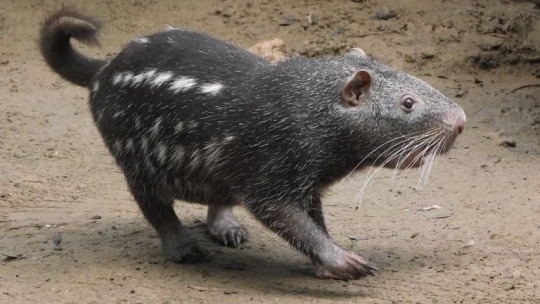


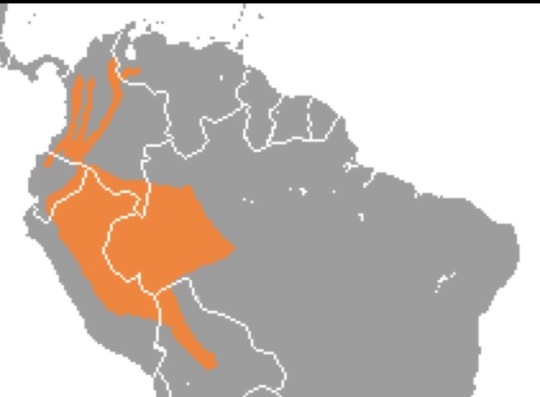
Pacarana
Dinomys branickii
Family Dinomyidae, pavorder Caviomorpha, suborder Hystricomorpha, order Rodentia
This animal is called the pacarana because it looks a bit like a paca, another South American rodent.
They are the only living member of their taxonomic family. Some other members of this family grew to incredible sizes, like the bison sized Josephoartigasia, which is the largest known rodent. Pacaranas themselves are pretty large, weighing as much as 15 kg, or 33lbs.
Pacaranas are very slow moving and peaceful animals. They eat fruits, leaves, and stems of plants and eat sitting down while holding their food like they have hands. It’s very cute.
The males also stand on their hind legs when approaching females during courtship and there was a viral video of one of these guys standing on their hind legs a while back trying to remove soap from their fur. It has been confirmed by an expert that no, you should not put soap on a pacarana.
They’re mainly nocturnal and terrestrial, but they do a bit of climbing.
These animals are vulnerable to becoming endangered.
@jackalspine @fifiibibii
66 notes
·
View notes
Text
Serious question: are you more into Castorimorpha, Hystricomorpha, Myomorpha, Sciuromorpha, or Anomaluromorpha?
It's a really tough one for me, because beavers are in Castorimorpha but guinea pigs are in Hystricomorpha.
I'm not really into Myomorpha, I mean no offence... maybe if I were into pocket pets. You kids are probably too young to remember when carrying around a mouse all day was cool, eh?
As for Sciuromorpha, a mountain beaver sounds like an oxymoron. What the fuq do those do? I don't know, i should find out. I guess a marmot is cute, but what's it do? I know what a flying squirrel does, and I'm not impressed, though I know I should be. I just can't get into this suborder, because I doubt they can even compare to the off-the-charts cuteness of the guinea pig or the epically civilising nature of the beaver, but I'll try right now, ok?
There's some weird and, to me, unknown stuff in Anomaluromorpha that's probably interesting.
See kids, from my immature tone today, how much American is still in me? Dismissive and bitchin and complain and lazy, acting like millions of small land mammals just aren't good enough for me to care about or some shit -- awful of me, truly, even though i'm talking in jest, it's not really funny, is it? -- and I'm reluctantly forcing myself to investigate, at least, which is more than a lot of people would.
0 notes
Text
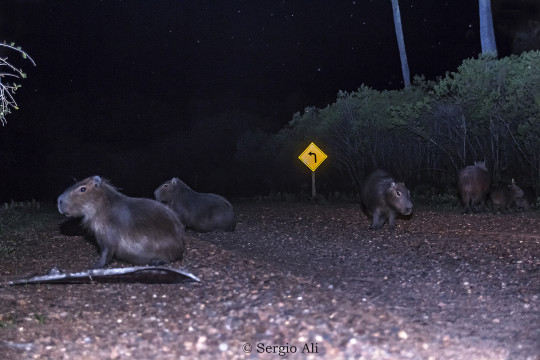
Capybara (Hydrochoerus hydrochaeris)
Photo by Sergio Ali
#fave#capybara#hydrochoerus hydrochaeris#hydrochoerus#hydrochoerinae#caviidae#caviomorpha#hystricognathi#hystricognathiformes#hystricomorpha#rodentia#glires#euarchontoglires#boreoeutheria#eutheria#mammalia#tetrapoda#vertebrata#chordata
272 notes
·
View notes
Photo

A young nutria rat at the Mönchbruch nature reserve in Kelsterbach, western Germany
Photograph: Dorothee Barth/DP/AFP/Getty
(via The week in wildlife – in pictures | Environment | The Guardian)
#Nutria#Myocastor coypus#Myocastor#Myocastorini#Echimyinae#Echimyidae#Octodontoidea#Caviomorpha#Hystricognathi#Hystricomorpha#Rodentia#Mammalia#mammal#Germany
15 notes
·
View notes
Photo
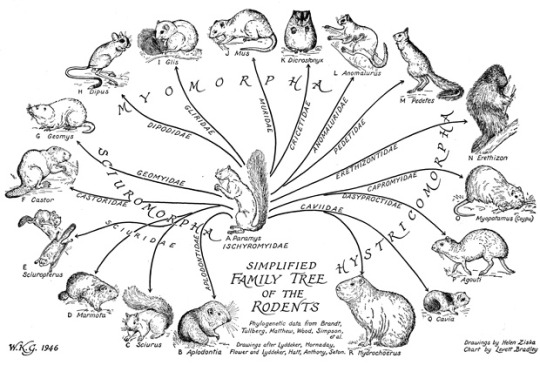
#rodents#rodentia#phylogeny#1946#evolution#Trees of Life: a Visual History of Evolution#2011#Theodore W. Pietsch#Myomorpha#Hystricomorpha#Sciuromorpha#taxonomy
8 notes
·
View notes
Text
Grass cutter.

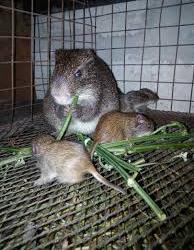
The Grasscutter: A Livestock of Tomorrow.
The grasscutter (Thryonomys swinderianus), variously known as the marsh cane-rat, ground hog and in francophone West Africa,
the aulacode or incorrectly, the agouti is a rodent but not a rat proper, since it belongs to the Hystricomorpha (porcupine family).
Life of the Grasscutter:
Grasscutters live above ground and are considered to be nocturnal. However, during the rainy season when sufficient security, shade and moisture are available, they are sometimes active during the day. After a certain period of acclimatization to their enclosure, grasscutters under studies have also started to feed by day.
Grasscutters are harmless and their response to danger is generally to flee. They often live in groups of 3 to 12 individuals: 1 male and 2 to 3 females with their offspring. The search for food and mating by the grasscutter is generally done between 5 pm and midnight and again at first light. The rest of the period is spent in rest, chiefly grooming and searching for a nest.
Globally, wildlife has great potentials for meat production and serves as an important source of the highly desired animal protein.
However, with ever increasing human population and obvious protein shortage in Africa, there is the need for an exploration of other means to provide readily acceptable meat on short term basis.
Wildlife domestication has been recognized as a way of achieving this objective. A few number of small mammal and crop farmers, trade or breed wild rodents
Among the wild rodents, the grasscutter, or cane rat or cane cutter is the most preferred. Grasscutter is a wild hystricomorphic rodent widely distributed in the African sub-region and exploited in most areas as a source of animal protein. Being the most preferred and most expensive meat in West Africa including Nigeria, Togo, Benin, Ghana and Cote d’ voire, it contributes to both local and export earning of most West African Countries.
egfg 👨🏿🌾
10 notes
·
View notes
Text
Pest Control: Getting Rid of Rodents
There are actually around 4,000 rodent species categorized based mostly on their own anatomy similarities and distinctions. Over-all, a few significant teams with around 30 households make up the overall rodent population.
Frequent Rodent Sorts
The greater common rodents drop into three key suborders. The suborder Sciuromorpha includes squirrels, chipmunks, marmots, woodchucks, prairie dogs, gophers, pocket mice, kangaroo rats, and beavers. The suborder Myomorpha is created up of mouse-like rodents and features a significant number of mouse and rat species, including hamsters, lemmings, voles, muskrats, gerbils, dormice, and jerboas. The suborder Hystricomorpha incorporates porcupine, capybara, nutria, agouti, cavy, mara, chinchilla, and several other species.
Commensal Rodents
Rats and mice are largely liable for feeding on up or contaminating a food stuff supply. These kinds of rodents are generally known as "commensal rodents" mainly because they live with or in close association to people. The most typical commensal rodents are the home mouse, the Norway rat as well as the roof rat. These rodents spoil our foods by contaminating it with feces, hair and dander. These pests are present in properties, supermarkets, and dining places all over America In combination with warehouses and food stuff processing facilities. The prevention and control of the commensal rodent population is a large concern in many states exactly where these pests have the ability to thrive.
Rodent Pest Manage Selections
Rodent pest Regulate is often managed in various strategies, determined by your where you reside, your need to be inexperienced along with your funds. The next gives advantages and disadvantages for a variety of Best Pest Control in dubai.
Mechanical traps.
These traps are classified as the quickest and most reliable means to manage pest challenges. The trapping of mice has many positive aspects such as value, relieve-of-use, and protection. Quite a few property and business owners like traps since they can confirm which the pest Management support they hired bought them effects. Furthermore, it ensures that the rodents do not die in crawl Areas or basements the place They may be more difficult to eliminate. Traps employed along with other green pest Command approaches usually have the very best In general effects.
In spite of these advantages, mechanical traps for mice and rat Regulate may be a little bit crude thinking about other methods currently. Animal enthusiasts may well not much like the cruelty aspect of how the rodent is killed. Also, this sort of devices positioned about an Lively residence or business enterprise might be dangerous to very little youngsters and Animals.
Eco-friendly Chemical Pest Command.
This pest Management service delivers several rewards and couple of shortcomings. Chemical pest Manage is on the market that's designed up of decreased or non-poisonous products. Some pest prevention products and services will supply chemical repellants that come with organic or normal products created to be both of those efficient and biodegradable. This Regulate option is eco-friendly. They are also considerably less harmful and thus are safer to own placed on your home In case you have compact kids or pets.
Seem Repellents.
Rodent repellents that use seem are regarded as far more humane than common mice traps. This method makes use of a tool that places out an intense sound that displaces rodents, triggering them to flee from a home. This option is an excellent pest Regulate method for all those with tiny little ones or other Animals that need to be kept Protected.
One of several only Drawbacks into the repellent is that you might have a more difficult time obtaining the rodents to completely try to avoid your private home. It also does not usually get the complete mouse or rat populace to go away.
Standard Pest Handle Chemical compounds.
Mouse and rat poison remains to be broadly utilised as it gets rid of rodents rapidly and properly. The bromethalin normally Utilized in rodenticide brings about a fast Loss of life to the pest. Versions of this and numerous other chemicals are available for indoor or out of doors software.
As just one would be expecting, the chemical compounds Utilized in these rat poisons are hugely lethal and should not be used if there are tiny youngsters or animals that could come in connection with it. You can find probable wellbeing pitfalls connected with these chemical substances touching skin or remaining inhaled likewise.
#Best Pest Control in dubai#Pest control in dubai#Cheap Pest Control dubai#Quality Pest Control dubai#Bedbugs control in dubai#Pest control near me
0 notes
Photo

What Is a Chinchilla?
Hello, and welcome to LoveMyChinchilla.com—the home of everything chinchilla-related. But what are chinchillas, and why have we dedicated our site to them?
What are chinchillas? Chinchillas are small-to-medium sized rodents from the Andes Mountains in South America. They look big, but only because they have very dense fur. They have large ears and long whiskers, and long bushy tails. They were hunted for their fur for hundreds of years so are almost extinct, so today's pet chinchillas have all been bred in captivity. They make fun and cuddly pets and can live for twenty years. The purpose of our site is to educate owners new and old, improve the welfare of pet chinchillas, and discourage the breeding of chinchillas for their pelts/fur.
The guide below answers every basic need-to-know question you might have: from what is a chinchilla? to why chinchillas are kept as pets. We'll also give a brief overview of what it takes to care for a pet chinchilla (as they're needier than other pets!)
What Is a Chinchilla?
Chinchillas are a small-to-medium sized rodent from South America. There are two species: the short-tailed and the long-tailed chinchilla. There are also regional sub-types, although these aren't currently recognized as subspecies.
What Is The Scientific Name for a Chinchilla?
[caption id="attachment_1514" align="alignright" width="274"] Image courtesy of Wikimedia.[/caption]
Chinchillas have several scientific names.
The short-tailed chinchilla is seen by some as the 'type' of the species, meaning it's the most representative of what a chinchilla is. When a species is a type species, its scientific name is repeated, so the short-tailed chinchilla is sometimes known as Chinchilla chinchilla.
You might also see the name Chinchilla brevicaudata, which is the same species. This second name is the more common. 'Brevicaudata' comes from Latin, with 'brevi-' meaning short and 'caudata' meaning tail. You can see why it's called the short-tailed chinchilla in the diagram.
The long-tailed chinchilla is known as Chinchilla lanigera. Interestingly enough, the term 'lanigera' isn't related to the word 'long' as you might imagine. Instead, it's the Latin word for 'woolly'. While chinchillas aren't woolly, their fur was used for clothing, which was the meaning that the person who named the species was trying to impart. Ironically enough, it's the short-tailed chinchilla that has the nicest fur and was hunted the hardest by trappers; so perhaps it's time to think of a new scientific name!
Are Chinchillas Rodents?
Chinchillas are rodents, so they share a family with rats, mice, squirrels and other similar small animals. Rodents are characterized by their teeth, specifically their incisors, which are the four central teeth at the front of the mouth, two on the top, two on the bottom. In rodents, these teeth are long and continually grow throughout the animal's life. This applies to chinchillas and all other rodents like rats, mice and so on.
Are Chinchillas Marsupials?
Chinchillas aren't marsupials. Marsupials are a group of animal species which have pouches for carrying young in. This is necessary because the young are born relatively underdeveloped.
However, chinchillas don't have pouches they can carry young around in; they aren't closely related to marsupials. Marsupials and rodents are both within the mammal family, but aren't in the same broad groupings (order, family, genus etc.)
What Do Chinchillas Look Like?
[caption id="attachment_118" align="aligncenter" width="640"] This is your average chinchilla: Big ears, thick fur, and a long curved tail.[/caption]
The first thing you'll notice when you look at a chinchilla is its fur. The chinchilla has the densest fur of any animal, at around 70 or 80 hairs per follicle. This dense fur makes them look much bigger than they actually are.
Underneath its fur coat, the chinchilla looks like a surprisingly average rodent. You can tell from the skeletal diagram that they look almost like a squirrel or a big rat. The long tail, large head and big teeth mean that if you were just looking at a skeleton, you'd probably guess it was a large rat species.
Chinchillas also have big, rounded ears: especially the long-tail chinchilla. These help it to hear predators coming from a long way away. They don't have the best eyesight, so this is a big advantage!
How Big Are Chinchillas?
Long tailed chinchillas and short tailed chinchillas aren't the same length. Long tailed chinchillas are 10in/22cm long. Short tailed chinchillas, though, range between 11 and 19in/24.2 and 41.8cm long.
Both kinds of chinchilla look bigger than they really are, though. They look rounded and stout, especially short tailed chinchillas. But underneath all that fur, they're only the size of a regular rodent like a squirrel. Breeders try and breed as large chinchillas as possible as this is thought to be a quality trait.
What Are Chinchillas Related To?
While chinchillas are unique and fascinating creatures, they aren't so unique and fascinating that they're unrelated to any other living species.
You can tell what chinchillas are, and what they're related to, from looking at their family tree. Here's how scientists classify chinchillas:
Kingdom: Animalia. This is the kingdom that all animals are placed in, as opposed to plants, fungi and bacteria.
Phylum: Chordata. This is the grouping of animals that have spinal cords, many of which have spinal columns made of bone.
Class: Mammalia. Mammals are animals that give birth to live young and feed them with milk.
Order: Rodentia. Rodents are mammals that have large front teeth that grow throughout their lives.
Infraorder: Caviomorpha. Previously not considered to be rodents; a grouping of rodents based on skull types, all from the Americas.
Suborder: Hystricomorpha. Animals that have the same the same body structure as a porcupine (but without necessarily having the spines).
Family: Chinchillidae. A small group of animals including the long and short tailed chinchillas and the viscachas.
Genus: Chinchilla. The grouping of the two chinchilla species.
The further down this same tree another species is, the more closely it's related to the chinchilla. So, the phylum Chordata for example contains lots of different animals, including people and fish. Clearly animals in the same phylum aren't necessarily close cousins. But animals in the same genus, subfamily or family are closely related, while those in the same order (here, rodents) are reasonably close.
Viscachas
[caption id="attachment_2738" align="alignright" width="300"] Image courtesy of Alexandre Buisse. Note the more pointed ears, long body and rabbit/hare-like outline.[/caption]
Particularly closely related is an animal called the 'viscacha'. This looks like a cross between a rabbit and a hare, and it's found in the same places that chinchillas are. Strictly speaking, the viscacha is a kind of chinchilla, since it's in the family Chinchillidae; but when people talk about chinchillas, they only mean the long-tailed and short-tailed kind.
There are two kinds: the mountain viscacha and the plains viscacha. The mountain viscacha looks especially like the chinchillas people keep as pets. In fact, they look so similar that travellers frequently mistake them for actual chinchillas!
Chinchilla Rat
[caption id="attachment_2874" align="alignleft" width="300"] This is a drawing of the chinchilla rat. Note the smaller and more rounded ears, the tail with shorter fur, and the rat-like appearance.[/caption]
Another species that's a lot like chinchillas is the aptly named chinchilla rat.
Chinchilla rats are gray and have similar soft fur to chinchillas. But what sets them apart is that their body structure is smaller, so they look more like fluffy rats. But the similarities don't stop there. Chinchilla rats also live in the Andes, just like chinchillas do, and live in burrows like chinchillas too. They're herbivorous, so they eat lots of the same foods as chinchillas do. They're even social and live in large groups like chinchillas, too.
Chinchilla rats are part of the infraorder Caviomorpha, but aren't so closely related that they might be considered the same species or genus.
Other Rodents
While all rodents are grouped in the same order, that doesn't mean they're all equally as related to each other. While members of the same genus within the rodent order are of course closely related, a genus isn't as closely related to every other genus as it is to another. So, for example, rats are closer to mice than they are to beavers.
One species that's particularly closely related to the chinchilla is the guinea pig. Despite the name, guinea pigs come from South America, just like chinchillas do. Guinea pigs are in the same infraorder as chinchillas (the caviomorpha), making them more closely related than, say, chinchillas and rats.
Where Do Chinchillas Come From?
Chinchillas come from South America. They were native to Chile, Peru and Argentina although population decline due to trapping now means they're only rarely seen, with the population in Chile now seeming to be the only stable one left.
As for pet chinchillas, they all come from Chile originally. By the turn of the twentieth century, chinchillas had become endangered in South America. A man called Matthias Chapman got special permission from local governments, who had by then banned hunting chinchillas, to gather a small group of around twelve long-tailed chinchillas and export them to the U.S. All pet chinchillas are descended from this small group.
The Chinchilla's Natural Habitat
If you know anything about Chile, you'll know that it's where the Andes Mountains are. This is the world's longest mountain range, and it runs from the southern tip of South America up through Chile, through Peru and into Colombia. The entirety of the west coast of South America is dominated by these mountains.
The Andes shape the region's weather conditions, too. They're so tall that they stop weather systems from crossing them, causing something called a 'rain shadow'. This is an area where rain doesn't fall, which is why the Atacama Desert (which is next to the Andes) is the driest place on the planet. All of this means that chinchillas are used to a dry and cool environment.
When you think about it, this makes sense. It's because the region is so dry and so cool that chinchillas have such a thick coat of fur.
Why Are Chinchillas Kept as Pets?
Given that chinchillas are almost extinct in the wild, it's odd that they're so popular as pets. But when you learn about their history, it makes sense.
Chinchillas have long been prized for their fur. Before the Spanish conquered South America, the Inca and other peoples from Peru, Chile and nearby made great use of chinchilla fur. They gifted furs to the conquistadors, and the rest, as they say, is history.
Over the next few hundred years, the trapping of chinchillas became more and more common as demand for their furs increased. It commanded incredibly high prices, much higher than other furs, and was a staple of nobility and royalty. Come the end of the nineteenth century, the chinchilla's wild population had been decimated. This had the unfortunate effect of making their fur even more valuable. It became clear that there would be nowhere near enough supply to meet demand if trapping continued.
It was at this point that two things happened. The first is that the national governments of South American states banned the trapping and export of chinchillas. The second is that a man called Matthias Chapman trapped and exported a small group of chinchillas to begin the world's first breeding program for the animals. The exact nature of these trapping expeditions is unclear, and while sources state he struck some kind of 'deal' with the Chilean and/or Peruvian governments, the exact nature of this deal or whether there ever was one isn't known.
Either way, Chapman brought the chinchillas to the U.S. and began breeding them for their fur. For many decades, chinchillas were kept solely for profit, and it was long frowned upon to sell chinchillas to people who wanted to own them as pets. Today, though, the situation is reversed: most owners and owners' groups approve of keeping them as pets, but not for profit.
Are Wild Chinchillas Still Endangered?
Even though trapping chinchillas was made against the law a hundred years ago, the wild population of these animals still hasn't recovered. The exact numbers of wild chinchillas aren't known for several reasons:
There are hardly any left, so it takes lots of work to find them.
Chinchillas live high up in the Andes Mountains, somewhere that's hard to access. It's difficult for scientific teams to get there.
Chinchillas are secretive animals that live in burrows. Even if you go to their natural habitat, you would struggle to find them.
Chinchillas used to have a broad range that spanned several countries.
Money doesn't grow on trees, and to send a scientific team out to Chile to count all the chinchillas there would cost lots of money.
What's clear, though, is that the population hasn't bounced back to its previous level. Chins used to live in herds of up to a hundred animals. Today, groups of this size simply cannot be seen.
How Do You Care for a Pet Chinchilla?
This section of the guide is necessarily short. Caring for a chinchilla is a complicated business, as there are lots of things they need; a complete guide would take far too long to read. That's why we've made a summary of the most important things you need to know...
Cage & Environment
[caption id="attachment_783" align="alignright" width="300"] A chinchilla cage with a basic layout.[/caption]
Your chinchilla needs to live in a cage. If it doesn't, you could accidentally injure it or it could escape. If it escapes, it could easily pass away, as chinchillas are highly sensitive to temperature and humidity. Chinchillas do best when they live in same-sex pairs, but can live alone if you spend lots of time with them. The cage should be tall, e.g. 2x3' base and 4' tall.
You need to monitor both the temperature and the humidity in the cage. The humidity shouldn't get above 50%, and the temperature shouldn't get above 70 degrees Fahrenheit/15 degrees Centigrade. You should put the cage in a room that can meet these requirements, and not anywhere that will get direct sunlight. Needless to say, you should also pick somewhere that won't have lots of loud noises, bright lights and similar stressful things.
The cage needs to contain several things:
A hide for the chinchilla to hide in. Wild chins like to hide in burrows and rock crevices, so your pet chin will feel stressed if it has nowhere to hide.
A hay rack to store hay in. Chins eat hay. Hay racks are better than bowls because the chinchilla can't pee on its hay.
A large water bottle. Self-explanatory.
Suitable exercise equipment. Chins need special wheels that are much larger than you might expect. Hamster wheels, even big guinea pig wheels are nowhere near big enough. And chinchillas can break their feet in wheels with slats or bars, so it has to be a solid material like metal or wood.
Platforms to jump to and from. Chins spend much of their waking hours hopping from one rock to another. Again, your pet would feel unhappy if it couldn't express this behavior.
That, of course, is far from all you need to know. The section of our site on Cage Setup can help you learn more.
Correct vs. Incorrect Diet
Novice owners frequently make the mistake of thinking chinchillas need to eat vegetables. But that's not true.
Chinchillas need to eat hay and hay pellets. While we need lots of variety in our own diets, chinchillas don't: they can eat the same hay for their whole lives and get all the macronutrients, vitamins and minerals they need. Hay pellets are made from the same kind of hay as fresh, just compressed down, and sometimes with fillers like soybean meal added.
An incorrect diet isn't just bad because it's nutritionally deficient, though. Feeding unsuitable foods like fruits and vegetables can cause diabetes or fat. In the short term, they can cause dangerous levels of gas and bloating which can rupture your chinchilla's stomach or gut lining. This means it's better to avoid experimenting with new foods and snacks, and stick to foods owners already know works.
Play Time
Chins need play time, otherwise they'll get bored. Put yourself in a chinchilla's shoes: if you had to sit in a cage all day, you'd go stir-crazy too. That's why you need to give your chinchilla toys and outside-the-cage time.
But you can't let a chinchilla loose to do what it wants. You have to chin-proof your room first. That means making it safe for your chinchilla to run around. In short, you have to:
Fully tidy away any wires, or get rid of them completely, so your chinchilla can't chew on them
Block off any entrances and exits to the room so your chinchilla can't escape
Block off any gaps under furniture, or ideally, pick a room that doesn't have any furniture in it for your chin to hide under
Don't let any other pets in, and ideally, pick a room that other pets are never allowed in
Only once you've done these things should you let your chinchilla out. So long as it's supervised, it can stay out as long as it wants, although most owners limit playtime to half an hour. Don't put your chinchilla in an exercise ball, as your pet will overheat inside one and could even pass away.
Your chin also needs things to keep it entertained while it's inside its cage. Chew toys are the best for this, but suitable exercise wheels and platforms keep it entertained. If you put any toys in its cage, pick ones that aren't plastic or cotton.
Aside from this, there's still lots more to learn. But that's what our site is for. We've researched in scientific journals and read through thousands of pages of owners' experienced so that you don't have to—so that you can give the best possible care to your pet. Use the search bar at the top of the page to find the answers to any question you might have, or look through our related posts below!
Below, you can find our chinchilla quiz, new posts for further reading, and a signup for our Chinchilla Newsletter!
[ays_quiz id='9']
#chinchillas #chinchillafaqs
0 notes
Text
Crested Porcupine
#FaunaFocus The crested porcupine is strictly protected under international and domestic legislation in Europe and is found in several protected areas throughout its range. #Porcupine #Porcupines #CrestedPorcupine #CrestedPorcupines
The crested porcupine is strictly protected under international and domestic legislation in Europe and is found in several protected areas throughout its range.
The crested porcupine is strictly protected under international and domestic legislation in Europe. It is protected under Appendix II of the Bern Convention and is listed on Annex IV of the EU Habitats and Species Directive. It has…
View On WordPress
0 notes
Text
Roedores
"
Roedores é como chamamos a ordem Rodentia. É dividida entre 30 famílias e mais de 2000 espécies, sendo provavelmente a ordem mais numerosa de mamíferos (chegam a representar 43% das espécies de mamíferos conhecidos). Mas a composição e número de táxons são alterados muitas vezes, depois dos estudos.
Os primeiros fósseis que temos é após a extinção dos dinossauros, há 65 milhões de anos atrás. As primeiras espécies são do antigo supercontinente Laurásia, depois houve colonização na África e posteriormente conseguiram chegar na América do Sul. Apesar dos marsupiais serem os primeiros mamíferos da Austrália, os roedores também chegaram e dominaram a fauna. A maior proporção desta ordem é encontrada na América do Sul, sendo que ela possui alguns gêneros e espécies endêmicas.
//<![CDATA[ googletag.cmd.push(function() { googletag.display('dfp-arroba-meio1'); }); //]]>
Distribuição geográfica
Originalmente estavam distribuídos em quase todo o mundo, exceto em algumas ilhas nos oceanos, na Nova Zelândia e na Antártida, porém, hoje foram introduzidos em toda parte. Como há uma grande variedade de espécies, elas divergem morfologicamente e ecologicamente, possuindo diversas adaptações, como em tamanho e peso, algumas com 5g, outras com até 80 kg; variam no tipo de habitat, alguns vivem a vida toda no subsolo, outras no dossel da floresta, alguns se adaptaram a uma vida urbana, como tipos de ratos, outros vivem no deserto e os encontramos até em meio aquático, como o castor.
Castor, uma espécie de roedor que vive em meio aquático. Foto: Procy / Shutterstock.com
Alimentação
A maioria das espécies são onívoras, mas existem aquelas que se alimentam só de plantas e outras que têm hábito especialista. Apesar de ser um grupo muito diverso, ele apresenta características em comum, como os dentes especializados para roer, possuem um único par de incisivos superiores (não possuem raízes, crescem continuamente) e um par inferior, não desenvolvido. Têm um par de superiores, com um ou mais pré-molares e molares. Nenhum roedor tem dentes caninos, ou mais de dois pares de incisivos. Quanto mais roem, os incisivos passam um no outro e ficam mais afiados, além de sofrerem desgaste.
//<![CDATA[ googletag.cmd.push(function() { googletag.display('dfp-arroba-meio2'); }); //]]>
Ecologia
A ordem rodentia tem um papel ecológico importante, uma vez que reproduz rápido e em grande quantidade, constituindo boa parte dos ecossistemas terrestres. Assim, contribuem para maior oferta de alimentos para predadores, uma vez que são presas de outros animais. Além disso, os roedores ganham destaque por muitas espécies possuírem populações desequilibradas, causando impactos ambientais, econômicos e na saúde humana, como a capivara, hospedeira do carrapato estrela, ou ratos que causam doenças, etc.
O músculo mais utilizado para estes animais roerem é o masseter, e a forma como o utilizam é que define a qual grupo de roedor o animal pertence.
Os ratos são um dos principais roedores presentes nas cidades. A urina desses animais é responsável pela transmissão de doenças como a leptospirose. Devido à abundância de alimentos para eles e rápida reprodução, são considerados uma praga urbana. Foto: Irina Kozorog / Shutterstock.com
Principais famílias e espécies
Está dividida em 5 subordens:
Sciuromorpha: Distribuída em 5 famílias entre porquinhos-da-índia, cobaias, preás, castor das montanhas, esquilos, marmotas, etc;
Castorimorpha: Dividida na Família Castoridae e na Família Heteromyidae ;
Myomorpha: Está em duas subfamílias e 5 famílias que englobam os ratos, hamsters, gerbils, camundongos, etc. Aqui se encontra a família Muridae, que é a maior dentro da ordem, apresentando mais de 650 espécies. Quem merece destaque aqui também, é a Família Spalacidae, que é representada por roedores fossoriais, com características bem peculiares.
Anomaluromorpha: Família Anomaluridae, oriundos da África e Família Pedetidae, representada pelas lebres-saltadoras.
Hystricomorpha: Dividida em duas infraordens e 18 famílias. O destaque aqui vai para família Bathyergidae, que possui olhos e orelhas reduzidas, com quase ausência de pelos e vivem em galerias subterrâneas. Também se encaixam as famílias de chinchilas, pacas, cutias, porcos espinhos, etc.
Famílias de roedores brasileiros:
Sciuridae, que é dos caxinguelês, esquilos, serelepe.
Dasyproctidae, que é das cutias (gênero Dasyprocta, com várias espécies);
Cuniculidae que é das pacas (Agouti paca);
Erethizontidae que é dos porcos-espinhos ou ouriços (Coendou prehensilis e Chaetomys subspinosus );
Caviidae que é das capivaras (Hydrochoerus hydrochaeris);
Murídae que é dos pequenos roedores, ratos e camundongos.
Referências:
https://animaldiversity.org/accounts/Rodentia/
R., R, Nélio et al. Livro: Mamíferos do Brasil, ed Eduel, ano 2006
S., F., Eliana. Ecologia da Cutia (Dasyprocta leporina) em um Fragmento Florestal Urbano em Campinas-SP. Tese de doutorado, Instituto de Biociências da Universidade Estadual Paulista“Julio de Mesquita Filho”, 2005.
The post Roedores appeared first on InfoEscola.
InfoEscola https://ift.tt/2YT4NtI
Publicado primeiro em https://www.infoescola.com"
Este conteúdo apareceu primeiro em: https://ift.tt/2w0BWWY
0 notes
Text
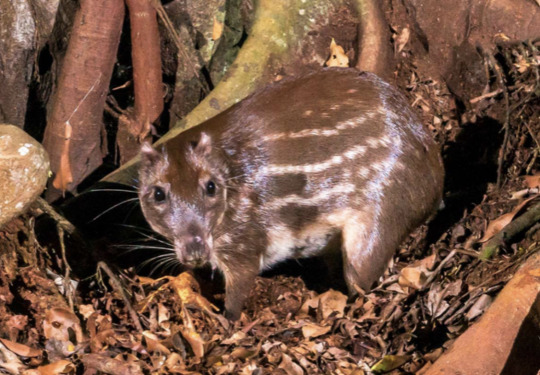



Lowland paca
Cuniculus paca
Family Cuniculidae, pavorder Caviomorpha, suborder Hystricomorpha, order Rodentia
Also known as the spotted paca, tepezcuintle, guardatinaja, pisquinte, jaleb, conejo pintado, guanta, majás, picuro, jochi pintado, boruga, tinajo, guartinaja, gibnut, labba, lapa, and lappe.
There is another animal with a similar name, the Pacarana. But these are not the same animal. They simply have similar appearances.
They are mainly quiet and nocturnal. They dig burrows about 2 metres below the surface with usually more than one exit and are great climbers and swimmers.
They will often seek water to escape predation as they can hold their breaths for several minutes.
They are omnivorous and important seed dispersers. They love fruit and will also eat stems, leaves, tubers, roots, nuts, seeds, and herbs.
They will also eat from carcasses to supplement protein. They eat flesh less often than plants though. They lean more towards herbivorous in the wild and omnivorous in captivity, but have been known to eat flesh in the wild.
There is some conflicting information about their social structure with some sources saying they are largely solitary, and others saying that they are monotonous and form small family groups. Caring for young anywhere from 8 weeks to 6 months.
@jackalspine @fifiibibii
16 notes
·
View notes
Photo

North American porcupine (Erethizon dorsatum)
Photo by Gerry
#north american porcupine#porcupine#erethizon dorsatum#erethizon#erethizontinae#erethizontidae#caviomorpha#hystricognathi#hystricognathiformes#hystricomorpha#rodentia#glires#euarchontoglires#boreoeutheria#eutheria#mammalia#tetrapoda#vertebrata#chordata
28 notes
·
View notes
Photo
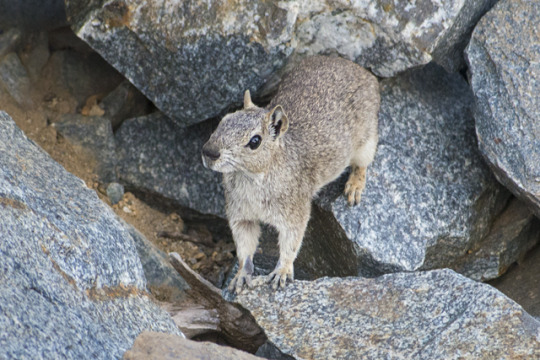
Mocó (Kerodon rupestris)
Photo by Cláudio Dias Timm
#mocó#moco#rock cavy#kerodon rupestris#kerodon#hydrochoerinae#caviidae#caviomorpha#hystricognathi#hystricognathiformes#hystricomorpha#rodentia#glires#euarchontoglires#boreoeutheria#eutheria#mammalia#tetrapoda#vertebrata#chordata
78 notes
·
View notes
Photo

Patagonian mara (Dolichotis patagonum)
Photo by charliejb
#captive animal#patagonian mara#mara#dolichotis patagonum#dolichotis#dolichotinae#caviidae#caviomorpha#hystricognathi#hystricognathiformes#hystricomorpha#rodentia#glires#euarchontoglires#boreoeutheria#eutheria#mammalia#tetrapoda#vertebrata#chordata
86 notes
·
View notes